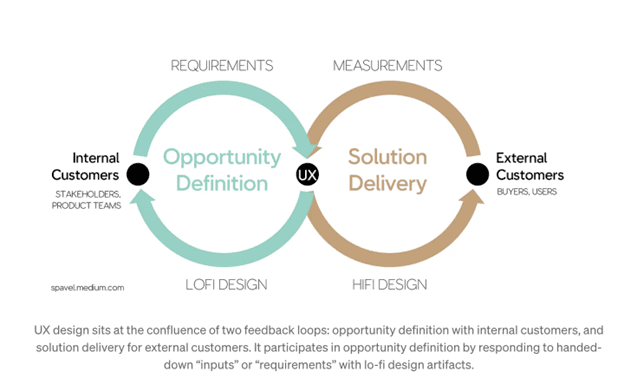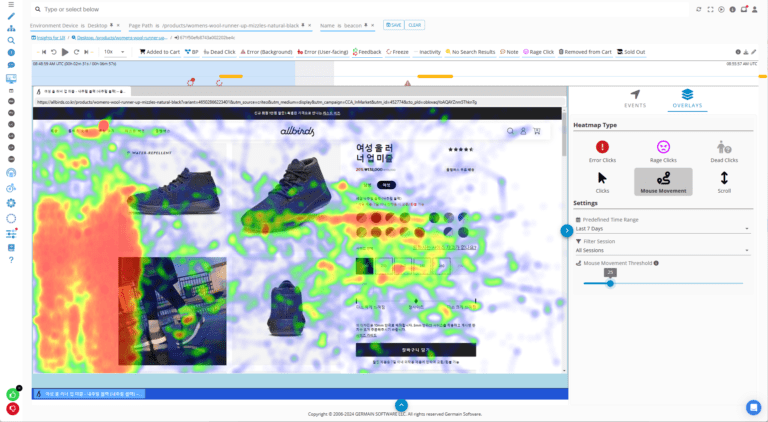Fully functioning sites, stores, and backend systems are essential for attracting customers, delivering services, and managing operations internally. Every organization’s systems and processes have a direct impact on its business, revenues, and reputation. IT performance monitoring should strive to ensure that the systems and processes of any organization operate correctly, round the clock. Under such circumstances, Synthetic Monitoring is a crucial and leading-edge technique that almost every Fortune 500 company uses nowadays.

→ Identify Frictions at scale (Process flow analysis, event correlation, automatic diagnosis, etc).No CC, 5 Minutes Setup
What Does Synthetic Monitoring Mean?
Synthetic monitoring is a technique to record and perform the series of paths that website visitors take while browsing a website or engaging with an application. In other terms, synthetic monitoring is referred to as synthetic testing. It stimulates the visitors’ path taken while browsing your website or using your application to ensure the optimal performance. Once recorded, Synthetic Scripts typically get executed by Bots widely distributed in your data center, the cloud, various geo location, etc. Moreover, it helps companies have insight into user behavior for scenarios including locations, devices, and much more. For synthetic monitoring, there are many applications available that help in monitoring this consumer behavior that can help in reviewing performance analysis.
Synthetic monitoring keeps track of your application’s performance automatically and validates the usual user browsing pattern. With proper performance monitoring, companies will be able to keep tabs alerting issues and develop a coping mechanism right away.

Why You Need It, What It Can Do For You?
You can lose your customers if your application has performance issues. Nowadays, customer experience is the key to businesses’ success. If a user is unhappy, they will move forward to another application or website in pursuit of a better experience. Organizations can lose their potential customers in this competitive era due to the website’s high bounce rate or slow speed. Everyone should monitor their website’s or application’s performance frequently to gain essential insight into what’s happening wrong.
Sometimes companies know something is wrong with their app but cannot contemplate how to begin the troubleshooting process. In such cases, synthetic monitoring tools and applications help pinpoint the problem and get the priorities straight. It also runs periodic tests on your application and website to keep a check on its performance. Besides, there are numerous reasons to use synthetic monitoring. Let’s discuss them in detail below:
Real-time Alerts
It is essential to warn end-users before problems are experienced with the service. Monitoring approaches that employ passive monitoring do not always alert a team to early issues, but Synthetic Monitoring’s proactive approach does well in this regard. With Synthetic Monitoring, it is possible to evaluate and verify many details and detect problems before they arise, such as a database server that isn’t performing correctly or an integration that is failing (e.g. your eCommerce site is up, the backend billing system is up, yet the connection between the two is failing).
Rapid Problem Resolution
Technology is ever-changing, so companies need updated content on applications and websites supporting the same. If companies fail to do so, the infrastructure or site can go south. Synthetic Monitoring provides quick visibility into performance issues and outages. Real-time automations are triggered to auto-resolve problems that have known solutions, or real-time error alerts are sent, which allows the technical team to work on them immediately. This way, problems and errors in applications or websites are resolved readily, unlike before.
Achieve Performance Objectives
Different companies have different objectives to be met. Likewise, have various performance benchmarks for their websites and applications. Synthetic monitoring tools help these businesses keep track of the permanence to achieve these objectives in time. Not just that, synthetic monitoring ensures apps are running in top-notch functionality by monitoring users’ route thoroughly and replaying it multiple times.
Expand Into a New Market
Organizations launch new products now and then. Mostly in the same market and sometimes in new too. When they launch in the same geographic area, the challenges are less. However, when a company launches a product in a new geographic area, it becomes daunting to sell it as they are unaware of the market. Here, synthetic tests help to determine the new product’s rendering at a particular location.
Validate SLAs
Companies use synthetic Monitoring for more than simply measuring performance and function. They can keep track of the exact availability percentage for a specific period with detailed reports. Companies use these reports to prove that they met the terms of their service level agreements. In contrast, others use these reports to determine what level of service is available on websites and services they depend on.
Analyzing Third-party Sources
The performance of websites and applications is impacted by third-party integrations—site search, advertising, CDNs, plugins and payment management systems. Synthetic monitoring tools allow organizations to monitor the performance and accessibility of their third-party components.
How Does It Work?
Synthetic tests emulate actual user activity by using multiple browsers, devices, and locations worldly to simulate the number of requests your applications and services receive. These tests can give relevant insight into regional performance issues, such as response time, uptime, and limited response time.
You can execute synthetic tests manually or automatically, and it depends on your requirement. Before deploying an application, companies can run synthetic tests to ensure optimal working. No matter the amount of traffic on the application, synthetic tests can be scheduled at regular intervals.
Besides capturing the performance and problem analytics, synthetic or proactive monitoring cannot catch a few things by itself. For instance, there can be certain errors not present in your test condition. If those issues occur, synthetic monitoring won’t be able to capture them. In that case, real-time tracking needs to be enabled that will assure complete coverage. Likewise, if there is an infrastructure issue, this monitoring cannot detect the latency caused by it. So, the team should check architecture and application insights together.

Synthetic Monitoring Vs Real User Monitoring
Real user monitoring and synthetic monitoring utilized by several companies worldwide help produce ultimate results. In conjunction, they can be used in the best way possible. In order to understand this, we should learn how they differ from one another first.
While synthetic monitoring uses a proactive approach, real user monitoring approaches in the exact opposite way. The latter monitors the user’s real-time action passively rather than actively checking the app’s performance. The moment users start connecting with the website or application, RUM(Real User Monitoring) starts working and delivers real-time analytics. This approach provides a more accurate user experience which can help companies to retain customers. Moreover, RUM provides long-term performance analytics and short-term by synthetic monitoring.
Additionally, under synthetic monitoring, you need to specify the tasks and transactions to be monitored. This is not the case with RUM. However, being the tracker that monitors everything, the RUM is not adequate for companies starting up in the market. The biggest drawback of using real user monitoring is it requires traffic to provide insights. Also, it produces data in large quantities, which increases the data storage cost of the companies and sometimes gets difficult to decipher. The advantage of using synthetic monitoring is it replays the recorded series of paths of the users to ensure the app is functioning in the right manner.
So, which one should companies choose?
Well, it depends on many factors, including the need of the hour, the size of your business, how mission-critical your application is, performance trends, the industry you work in, geological areas, and more. For some companies, real user monitoring turntables that synthetic monitoring couldn’t and vice versa.
Synthetic Monitoring Tools
Synthetic monitoring tools are applications used for performing synthetic tests in an organization. There are numerous such applications available today that can help maximize a company’s strengths and decrease its weaknesses. All these different solutions offer different types of benefits to the company and help in different ways. The variation is due to the evolving technologies, but the basic approach to it remains the same. So, we have made a list of features a good synthetic monitoring tool must-have.
Creating Competitive Benchmarks
Benchmarking competitors’ website performance will help organizations to set new objectives. Gaining insights on the competitors helps you to make better strategies and keep you going intact. You must know your competitors to stay ahead and beat them in the market. This helps in making important business decisions. Therefore, a synthetic monitoring tool must have a feature to get visibility of your competitor’s business.
Testing before launching an app or website
Synthetic monitoring tools can help gain performance and customer experience insights without huge traffic on your website or application. Therefore, at the time of quality checks, you can get help from this tool to better understand what your users will experience while using your website. This way, you can identify the pitfalls and work on them to create the best experience for your users.
Alerts for detected outages.
Since synthetic monitoring tests your application actively, it alerts you via email or SMS if any availability issues or other defects are there. These alerts will help improve the customer experience as you will take immediate actions for the outages and identify the problems timely.
Performance experiments comparison
One of the best ways to enhance your business performance is using trial and error methods. If your synthetic monitoring tool allows you to run experiments before making your website open for all, you will be a step forward to provide the optimal user experience. You can:
Test your website excluding or including specific third party components
Compare performance on various smart devices
Enable or disable certain features and monitor the performance
Use different locations to see any geography effects.
The Bottom Line
Monitoring of web and network assets in an organization becomes possible with synthetic monitoring. They can build proactive defense lines based on the analytics provided by the tools, which will take their business to new heights.



